Estuaries
Habitat code: 512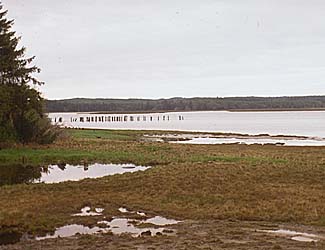 Photo: KMD |
 Photo: KMD |
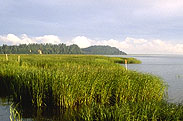 Spartina Spartina alterniflora Photo: COOP |
Distribution and Habitat: Three species of Spartina (Spartina alterniflora, S. patens, and S. anglica) are invading intertidal areas of Washington, Oregon, California and British Columbia. In Washington, Spartina is present in Willapa Bay and the Puget Sound. Introduced in 1894. It now covers more than 2,000 acres, and is a threat to oyster beds, mud falts, and eelgrass meadows. Interesting fact: |
 Pacific Harbor seal Phoca vituline Photo: KMD |
Distribution and Habitat: It is found in coastal waters, marine estuaries and rivers in areas free from ice. Diet: Interesting fact: |
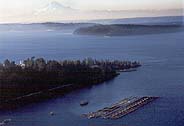 Farmed salmon Photo: AG |
Distribution and Habitat: Salmon are raised commercially in pens on the east and west coast. Interesting fact: |
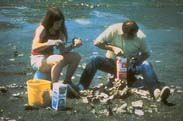 Shucking oysters Photo: AP |
Distribution and Habitat: Wherever there are accessible beaches, people can find clams and oysters at low tide. Diet: Interesting fact: |
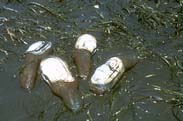 Geoduck clams scientific name Photo: AP | Distribution and
Habitat: Estuaries and beaches. Geoducks are sessile and do not move once they have selected a site about 2' below the surface of the sand. Native littleneck clams and manillas (introduced from Japan) are much smaller and live just beneath the surface of the beach, and further up the beach in the intertidal zone. Diet: Interesting fact: |